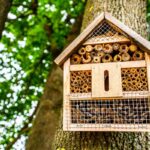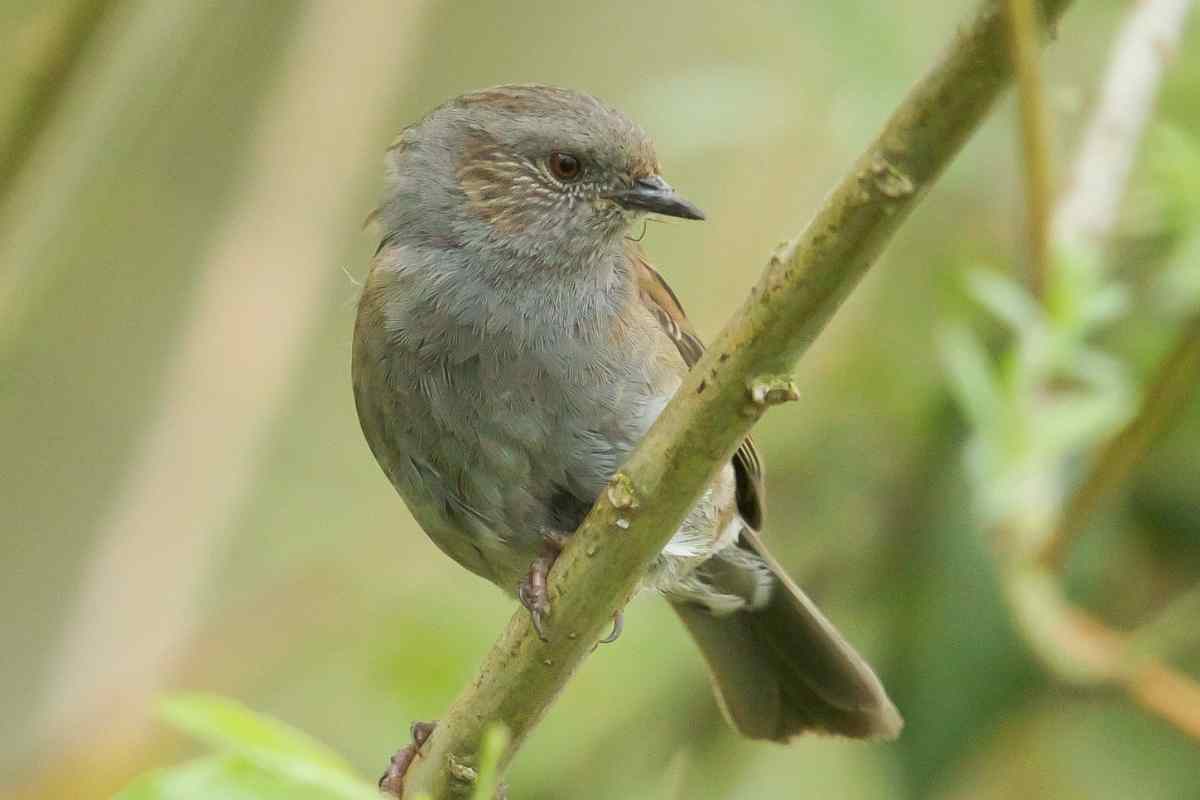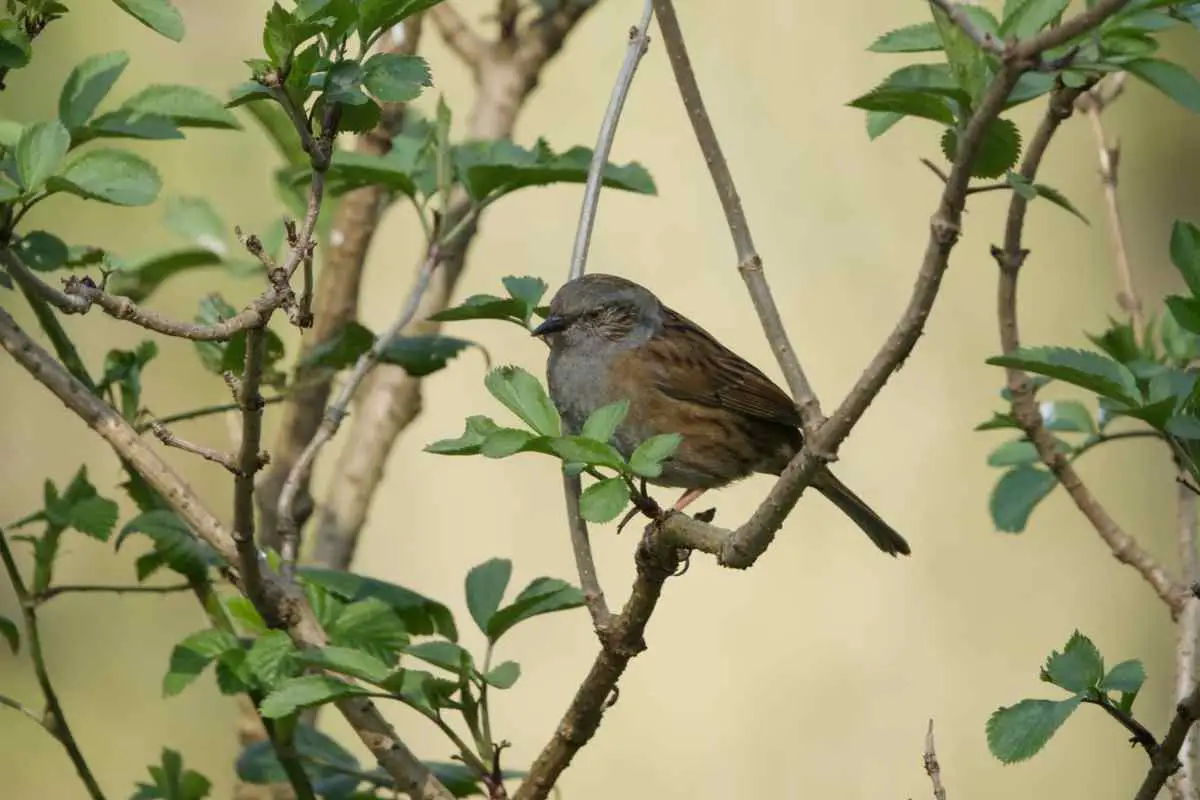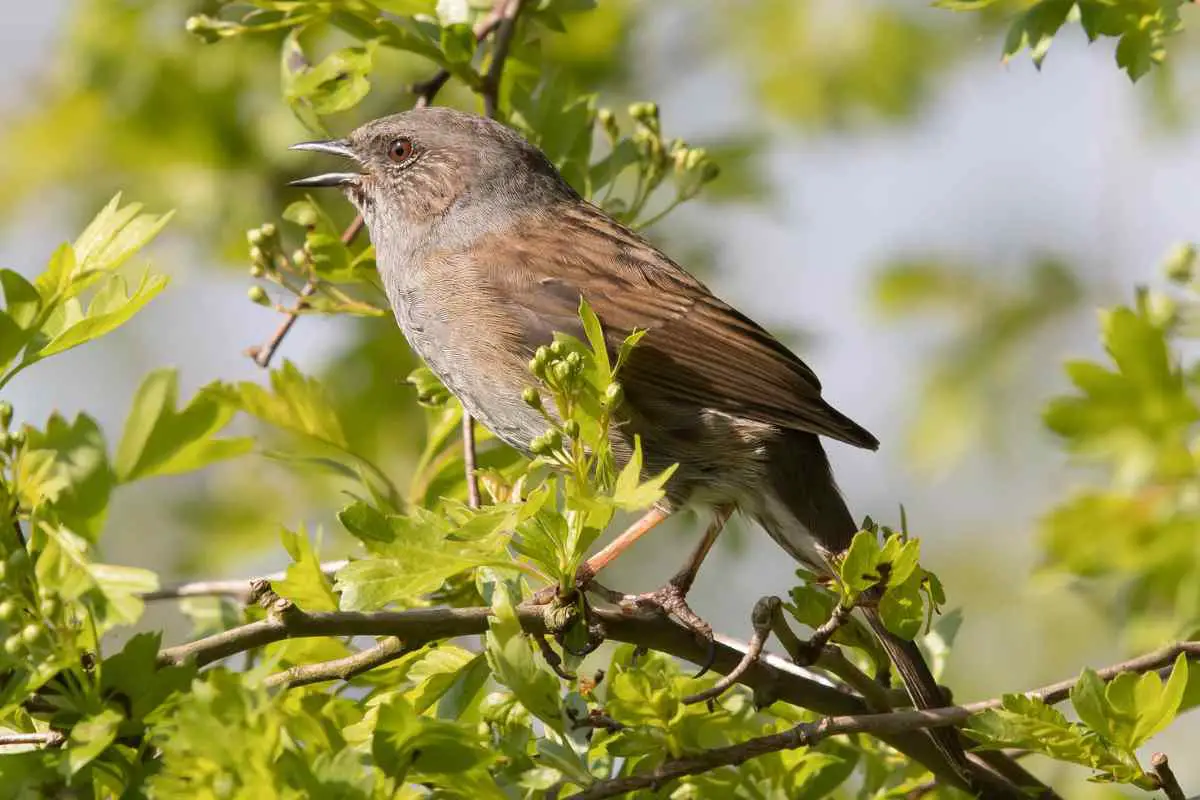An insect house should hang at least five to eight feet from the ground. For one, it needs to be high up enough for bugs to enjoy it as a natural habitat. For two, you’ll want it high enough to avoid the ground critters. Lastly, it needs to be high enough to catch the morning sun.
Bugs don’t tend to keep clean environments in their homes, so the necessary sunlight is to help keep mold and fungus growth in check since both prefer dark, humid environments. Also, you want it up high enough so smaller animals can’t reach it and potentially mess it up.
Hang it like you would a bird feeder as well, away from the potential wind that can easily destroy the habitat created by the insects you’re trying to attract.
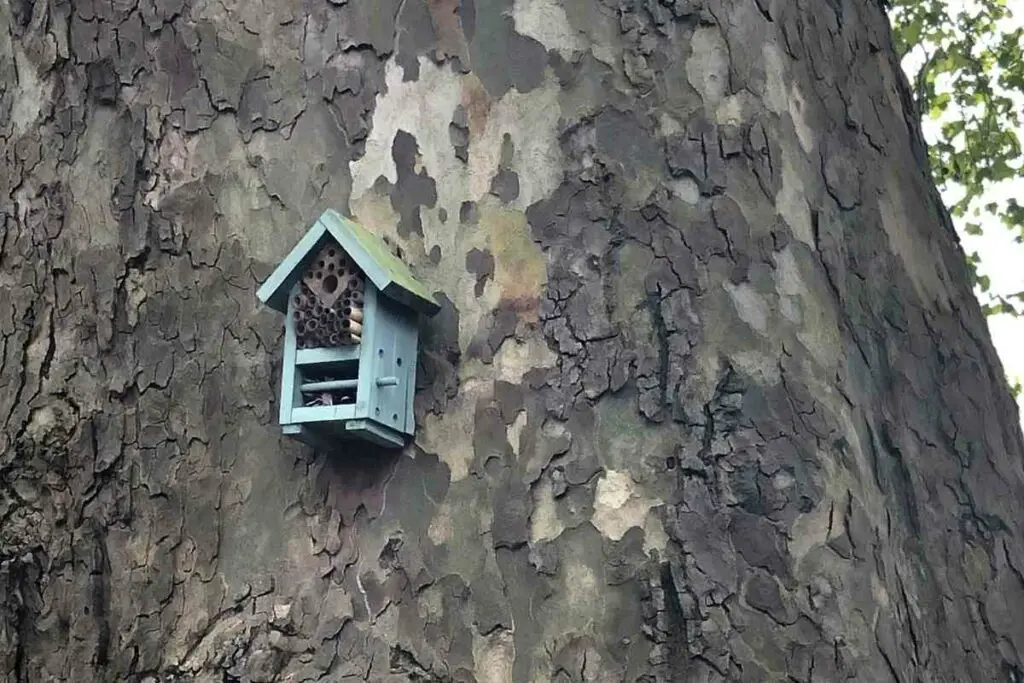
Table of Contents
How To Attract Bugs To Your Insect House
Another determination that goes into where you hang your insect house is making sure it’s close to trees or shrubs. This way, insects can easily make their way back and forth between the two. If you have enough room in the insect house, plant flowers to attract bees and other pollinators.
You’ll also want to plant flowers all around it so that the area becomes a prime target for bugs. You could consider doing a bee bomb, which is a packet full of clay balls that are loaded with wildflower seeds.
You can find bee bombs or similar wildflower spreads online at any gardening retailer. Bee bombs are especially useful because they come with a wide variety of wildflower seeds, so your insect attractants are varied.
Most wildflowers will accomplish the goal of attracting bees. They are called bee bombs after all. However, if you decide to individually select your wildflowers, you want to make sure that they are highly rated in terms of pollen and nectar production.
When Is The Best Time To Hang An Insect House?
The best time is right before spring kicks into gear and all the insects and pollinators are beginning to emerge from their winter hideouts. During the winter months, you should move it somewhere out of the elements if you can.
If you have nowhere else to put it during the cold months, it’s best to just hang it up until springtime rolls around again. Regardless of what insects you’re trying to attract—whether it’s bees, butterflies, dragonflies, ladybugs, or lacewings—you’re not going to see any of them when it’s cold.
So long as your insect house is in good condition and relatively new, it should be fine to set it aside throughout the winter after you have cleaned it.
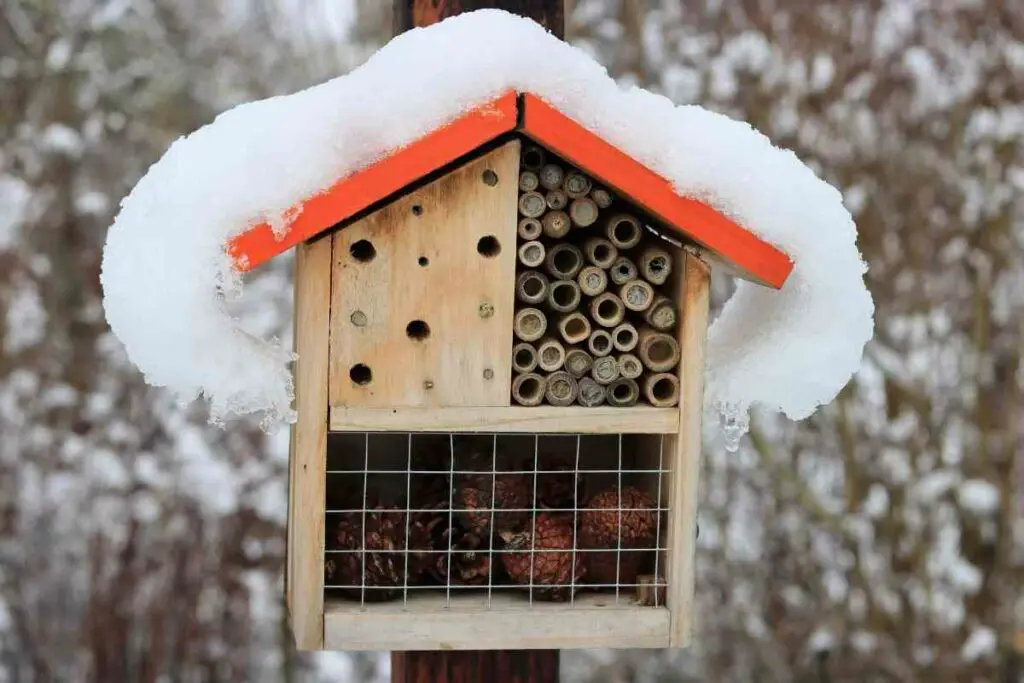
Should You Clean Insect Houses Often?
The main thing you want to avoid is fungus and mold growth or an invasion of mites. Unfortunately, you can only clean it during the offseason, as doing so beforehand will ruin your insect sanctuary for the rest of the year.
When winter arrives and it’s time to take down your insect house, you want to make sure it’s thoroughly cleaned throughout. Your main goal is to get rid of any cells left behind from insects or just the general residue that comes with housing insects.
The primary thing that you’re trying to avoid is fungus and mold growth. Both require humidity, warmth, and darkness. When you clean it, you’ll want to eliminate all of those factors. Also, mites can be every bit as much of a problem for other insects as they can for mammals.
You don’t want to leave behind a safe place for mites to takeover, feed, and breed in. Mostly, you want to make sure the insect house is every bit as attractive to insects as it was when you first hung it up.
When To Replace Your Insect House
For obvious reasons, the wood that goes into creating insect houses is not treated because it would ultimately be poisonous to insects and may even repel them. Since it’s untreated, you’ll want to replace it with a new one every two years, three at the max.
Also, untreated wood is more attractive to invasive things such as mold and mildew, termites, and other unwanted insect house guests. At the very least, you should replace parts of the insect house using your own best judgment as to whether or not they’re good any longer.










